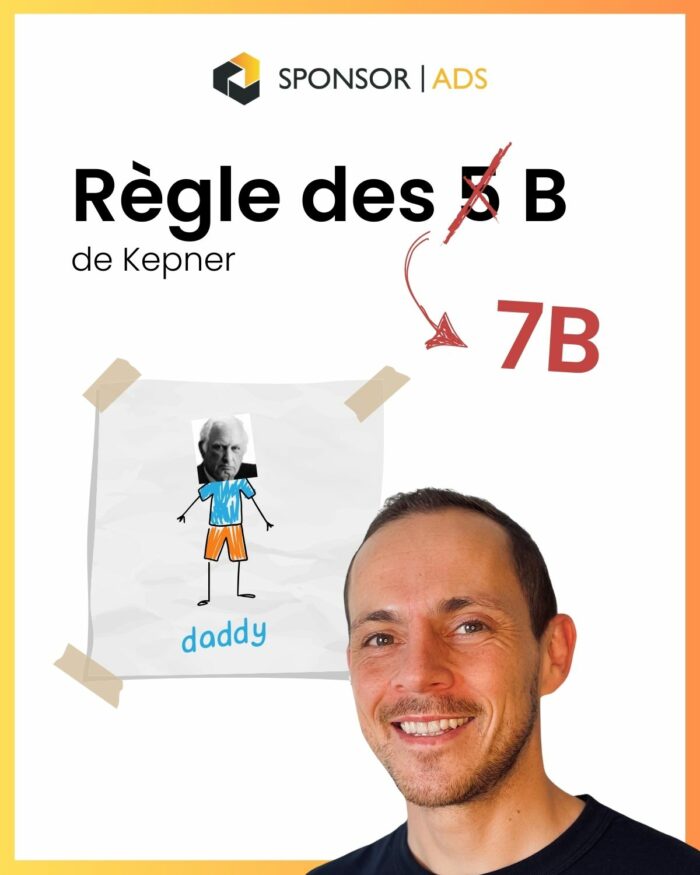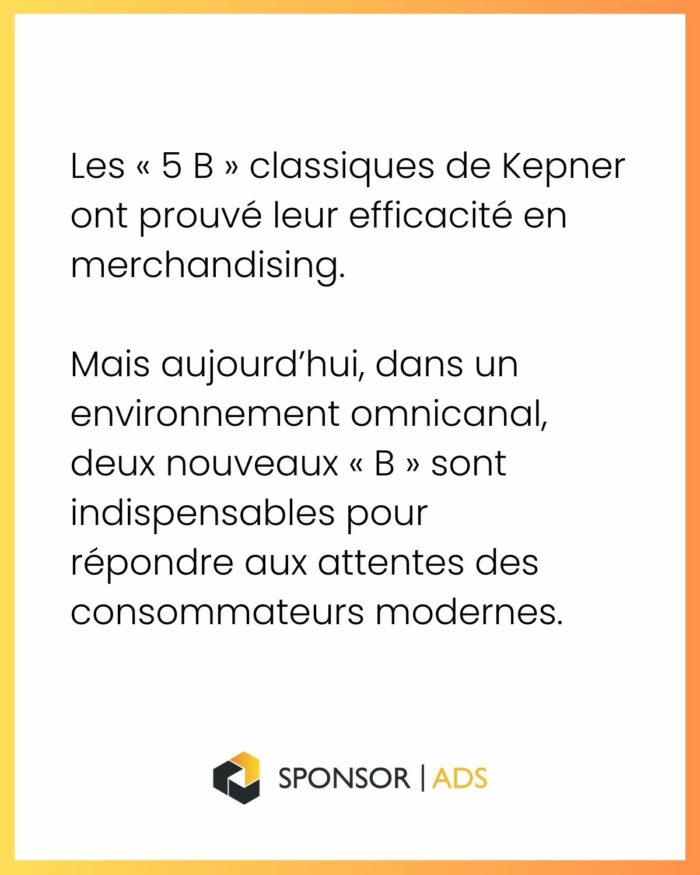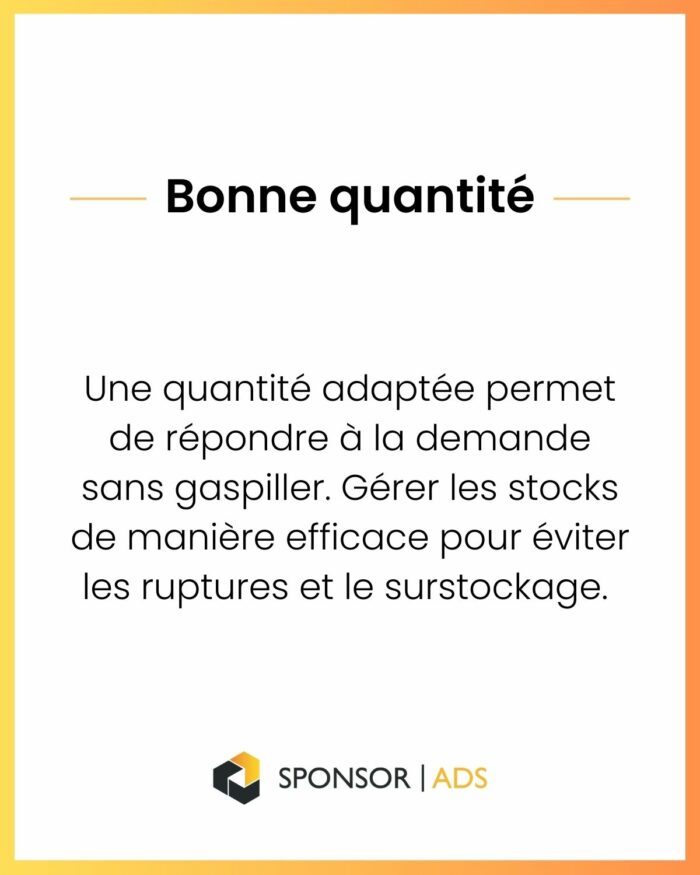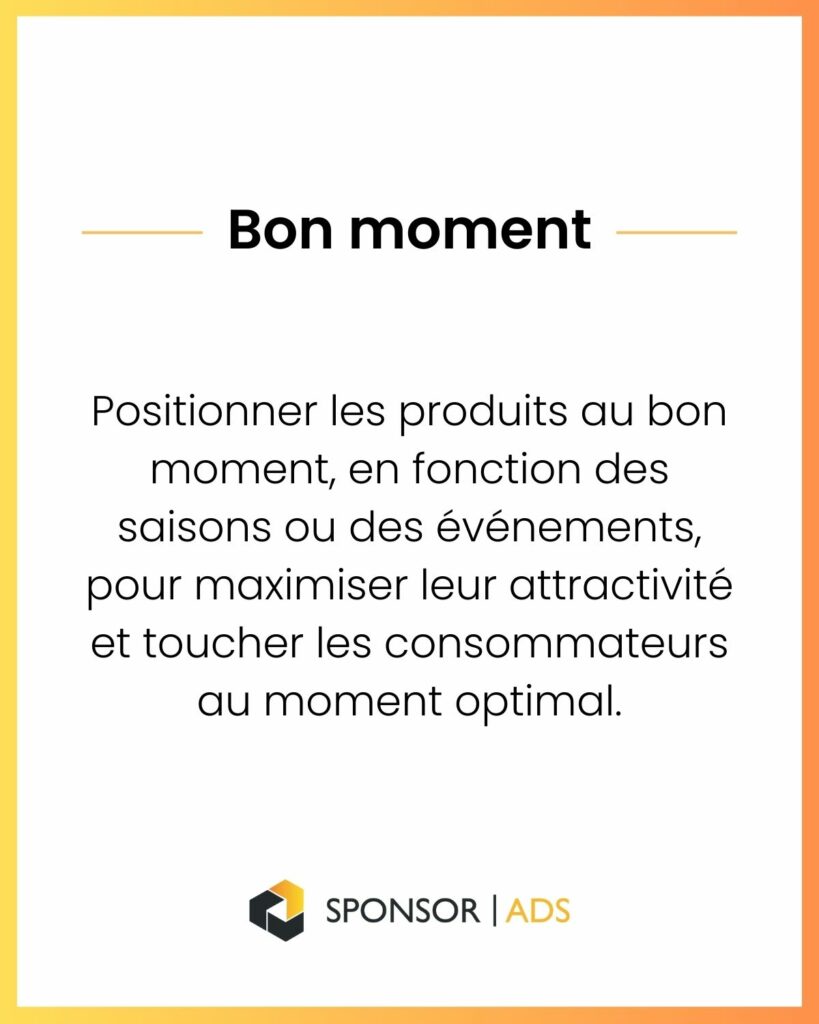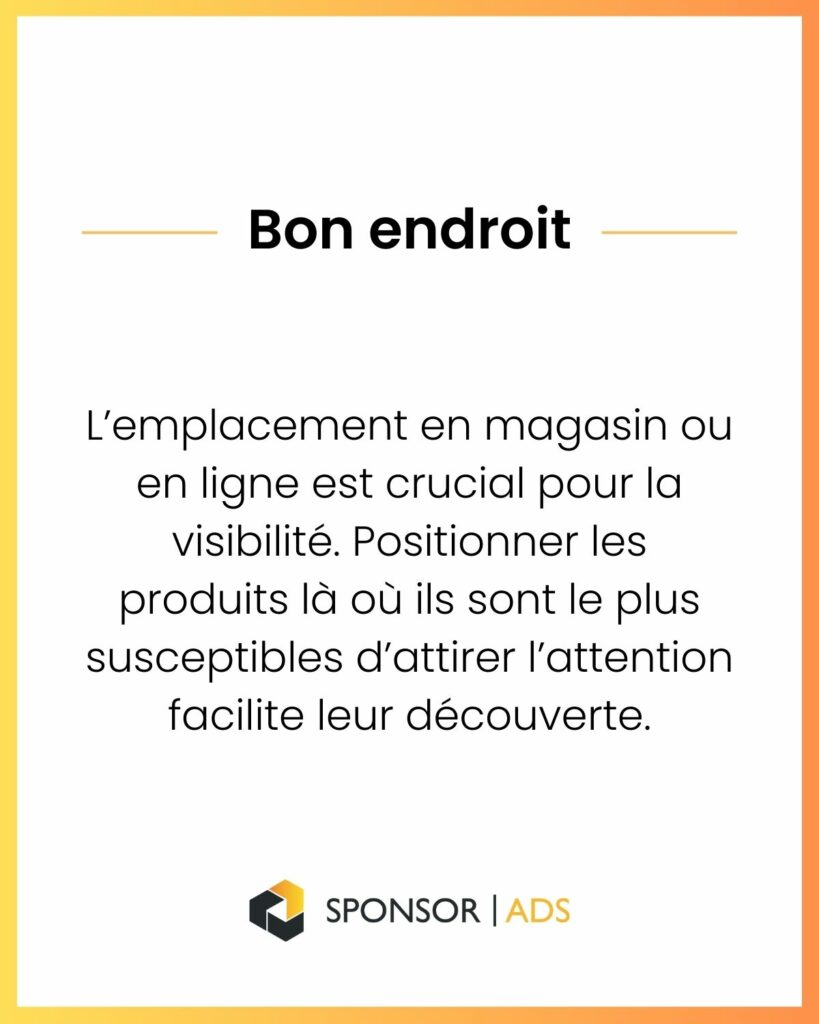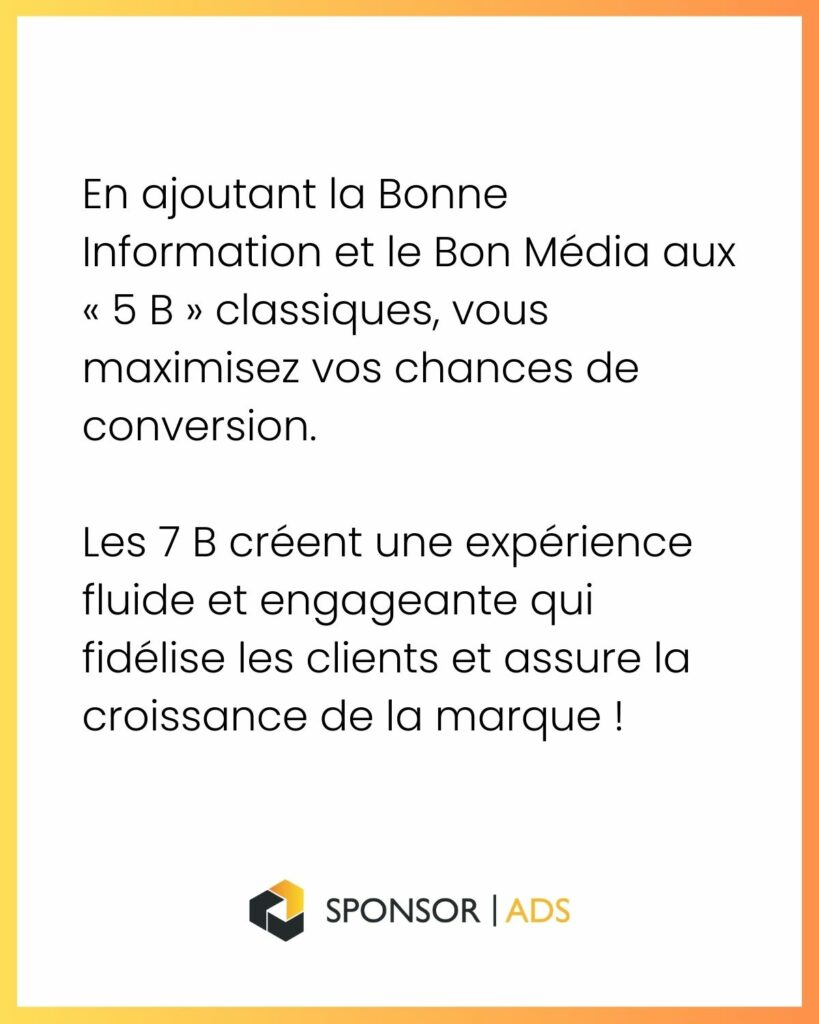What you’ll learn:
- The “5 B’s” are essential, but not enough. Kepner’s five pillars (right product, right quantity, right time, right price, right place) are essential, but they no longer fully meet the expectations of today’s consumers.
- Add the right information to guide and reassure. Providing detailed descriptions, quality images and customer reviews for each product helps remove disincentives to purchase and build trust.
- The right media is strategic in influencing the buying journey. Disseminate your messages at key moments and on the right channels (social networks, targeted advertising, points of sale) to help consumers make the right purchasing decision.
- The 7 Bs maximize impact in retail media. By adding the Right Information and the Right Media, you ensure a complete and optimal customer experience, aligned with new buying behaviors.
- A strategy based on the 7 Bs builds loyalty and engagement. Providing customers with a coherent, seamless experience, from discovery to point of purchase, strengthens their loyalty and enhances the long-term value of the brand.
Why the “5 B’s” are the basis of a winning strategy… but need to evolve
For decades, Kepner’s “5 B’s” have formed the basis of successful merchandising strategies. This model is based on five fundamental principles: the right product, the right quantity, the right time, the right price and the right place. This framework has enabled brands to structure their operations and capture consumers’ attention by optimally meeting their expectations.
But today, this traditional model is no longer sufficient. With the rise of retail media, where every sales space becomes a place of communication and consumers navigate between digital and physical, expectations have changed. To stand out in this new omnichannel environment, two new “Bs” have become indispensable: the Right Information and the Right Media. These additions allow us to adapt Kepner’s model to today’s realities and maximize the impact of our products on consumers.
Kepner’s 5 B’s: historic pillars of merchandising
Before turning to the two new “Bs”, let’s go back to the tried-and-tested basics.
Good product: The starting point of any successful strategy is a quality product, relevant to the target audience. It must meet specific consumer expectations and offer real added value.
The right quantity: Precise inventory management is essential to avoid stock-outs and overstocking. Good management enables us to meet demand without losing sales or accumulating unsold stock.
Good timing: Seasonality and promotional periods are strategic elements. Positioning a product at the right time can make all the difference, whether for seasonal products or events such as sales.
The right price: The price must correspond to the value perceived by the consumer and be competitive in its segment. You need to strike the right balance between profitability and attractiveness, without appearing too expensive or inferior.
Good location: Whether in-store or online, location is everything. Placing the product where it will be most visible and accessible increases its chance of attracting consumers’ attention.
Each of these “Bs” contributes to product visibility and accessibility. But today, with omnichannelity and the rise of retail media, two new elements have become essential to meeting the expectations of modern consumers.
The addition of 6ᵉ B: Good Information
With digital, the quality of information available on products has become crucial. Good Information is emerging as Kepner’s 6ᵉ B, as it is essential for answering the questions consumers have before they buy. A complete product sheet, quality photos, precise descriptions, customer reviews… all these elements make up Good Information, which directly influences the purchasing decision.
A product may be perfectly placed and at the right price, but without complete and reliable information, consumers risk missing out. In fact, 50% of consumers say they won’t make a purchase if product information is incomplete or unclear. Good Information is therefore the key to reducing disincentives to purchase, reassuring consumers and guiding them towards the final decision.
Let’s take a simple example: a consumer interested in an electronic device. He consults the product sheet and finds detailed information on technical specifications, photos from several angles, user tutorials and reviews from other customers. They feel reassured and are more inclined to buy, because they have all the information they need to plan how to use it. This level of precision and clarity is becoming indispensable, especially in a digital environment where consumers can’t touch the product.
The 7ᵉ B: Le Bon Média
Good Media is the strategic choice of advertising media adapted to each stage of the buying process. In retail media, channel relevance plays a crucial role in reaching the consumer at the right moment, with the message that best resonates with his or her evolving needs. Identifying the right media means understanding where the consumer is in his or her journey, and selecting the most appropriate channels to accompany them through to purchase.
For example, at the start of the buying journey, when consumers haven’t yet formalized their need but are beginning to become aware of it, media such as social networks or personalized emails are ideal. These media enable us to reach a wide audience and arouse interest with inspirational or informative content, in order to plant the seed of need.
As consumers progress along their research and comparison path, media such as targeted online advertising or sponsored articles can provide more concrete information and influence their choices. These media can be used to present specific solutions, reinforcing consumer interest and directing them towards a particular brand or product.
Finally, when the consumer reaches the decision phase, physical points of sale, in-store displays or promotional emails targeting immediate offers and benefits are powerful means of facilitating conversion. By being present on the right media at every stage, a brand can be sure of capturing consumers’ attention where they are most receptive and in tune with their current needs.
By aligning advertising channels with the stages of the customer journey, Good Media maximizes the impact of each interaction and ensures a natural progression towards the purchase decision.
Why the “7 B’s” are essential for success in retail media
The addition of the Right Information and the Right Media to the traditional 5 B’s helps to meet the new expectations of consumers, who are looking for a fluid, complete and inspiring shopping experience. Thanks to the 7 Bs, every brand can structure a solid retail media strategy that maximizes visibility, improves customer satisfaction and optimizes sales.
Kepner’s 7 B’s allow us to build a merchandising and communication strategy capable of capturing the consumer’s attention from the very first contact and accompanying them right through to purchase, meeting their needs at every stage. This model, enriched to adapt to the challenges of omnichannel and retail media, guarantees optimum visibility and efficiency in an increasingly competitive environment.
In conclusion, the 7 Bs don’t just position a product. They offer every consumer a complete, intuitive and engaging experience, transforming every purchase into a loyalty-building opportunity. By integrating the enriched Kepner model, brands are sure to create a lasting bond with their customers and stand out in an increasingly demanding market.
